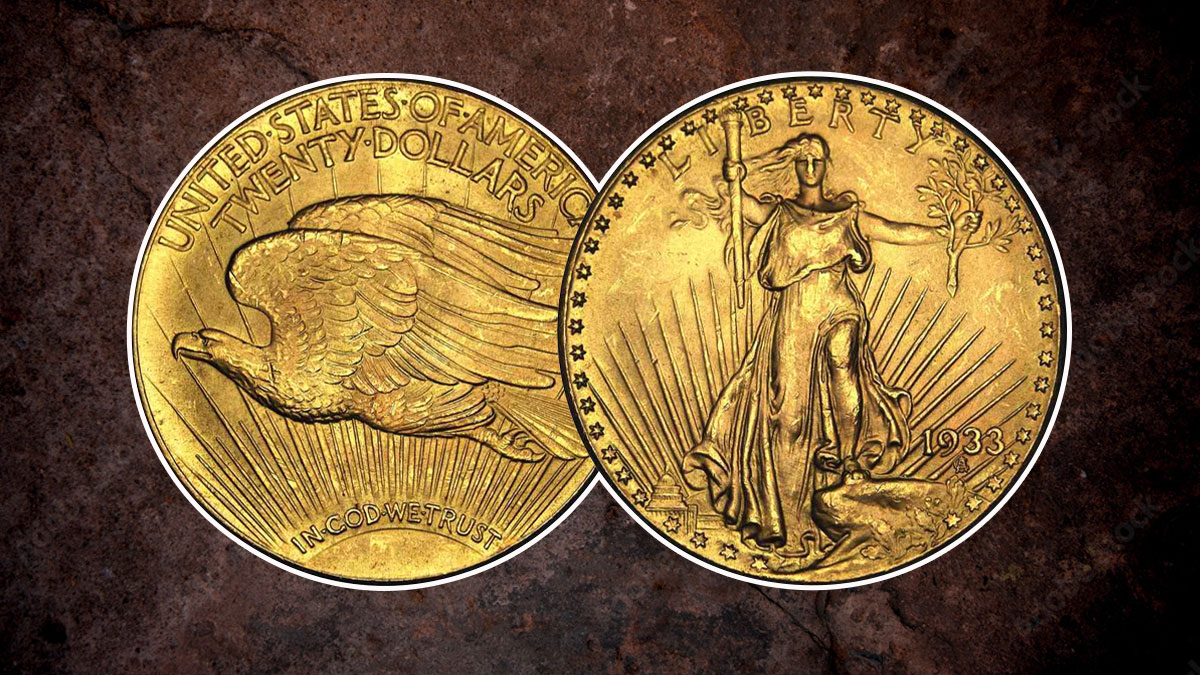
The 1933 double eagle $20 gold coin has a special place in American coin history, known for its rarity and controversy. While only one officially recognized coin remains in private hands, there are believed to be additional examples out there.
Back in 1933, the United States decided to stop using the gold standard that had been the basis of its monetary system since the early 1900s. As a result, most of the double eagles minted that year were melted down. This was a sad fate for what many consider to be one of the most stunning American coin designs ever created.
The famous American sculptor Augustus Saint-Gaudens faced many challenges in designing the coin, despite his renowned status. He didn’t get along with the Mint’s bureaucracy or its head engraver. He turned down numerous commissions, even ones with better terms because he was unwell.
In 1900, at 52, Saint-Gaudens returned to the US from Paris due to a serious illness that doctors later revealed to be a form of rectal cancer. It was so severe that he considered suicide. His wife, worried about his mental state, never told him about the cancer, although doctors warned her it might return.
Augustus Saint-Gaudens
President Theodore Roosevelt believed that Augustus Saint-Gaudens was the right person to rejuvenate American coinage, matching the grandeur of the nation. Roosevelt, a staunch advocate for American greatness, convinced the reluctant sculptor to start work on what Roosevelt dubbed his “Pet Crime” in January 1905.
Over the next two years, Roosevelt and Saint-Gaudens maintained constant communication. Roosevelt, a prolific writer, shared his vision for American coinage, aspiring for it to rival the artistry of ancient Greek coins. Saint-Gaudens, despite declining health, pushed forward with the project, aided by his assistant Henry Hering.
Saint-Gaudens passed away on August 3, 1907, before he could revise all American coinage. Only two designs were completed, both needing adjustments for commercial use. The ultra-high relief double eagle design required the most attention.
Unfortunately, miscommunication with the US Mint led to unusable revisions. Eventually, a lower-relief version was produced and put into production in late 1907. It circulated through the 1910s, 1920s, and early 1930s, but its high $20 denomination meant it was not commonly used in daily transactions. At that time, everyday items like bread and movie tickets were much cheaper, and even luxury items like electric washing machines were more affordable compared to the coin’s value.
1933 Saint Gaudens Double Eagle
This 1933 $20 gold coin, part of the St. Gaudens $20 series minted from 1907 to 1933, was graded by PCGS as MS65 twice. It features a design by Augustus Saint Gaudens and has a lettered edge, with a diameter of 34.00 millimeters and a weight of 33.40 grams. Minted in Philadelphia, it is composed of 90% gold and 10% copper, with a total mintage of 445,500. This coin set an auction record of $18,872,250 for an MS65 grade on June 8, 2021, at Sotheby’s.
History of 1933 Saint Gaudens Double Eagle
The double eagle, introduced in 1850 due to the California Gold Rush, was designed by Mint Engraver James Longacre and saw various modifications throughout the 19th century. Though its high value limited circulation, it was favored for large international transactions and was used in the West where gold or silver coins were preferred over paper money.
Sculptor Augustus Saint-Gaudens became associated with the Mint in 1891 but faced challenges. When judging a coin design competition, he found none suitable and criticized Mint Engraver Charles E. Barber’s work. Saint-Gaudens later designed a medal for the World Columbian Exposition, but his controversial reverse design was rejected. This led to his refusal of further Mint commissions for a decade.
Design of 1933 Saint Gaudens Double Eagle
Only about two dozen ultra high relief 1907 double eagles were struck, initially facing skepticism from Mint Engraver Barber. Despite experiments, the relief proved too high for practical coining. After Saint-Gaudens’ death, Barber produced a lower relief version. Roosevelt, impressed by the “High Relief” coins, pushed for their production. Over 12,000 were struck, followed by a large-scale release of Barber’s modified “Low Relief” version. Despite delays and modifications, the Saint-Gaudens double eagles are admired as some of the most beautiful U.S. coins.
1933 Saint Gaudens Double Eagle Gold Coin Worth
The 1933 double eagle $20 gold coin is highly sought-after due to its rarity and the controversy that surrounded it. This coin, which was minted in Philadelphia as part of the St. Gaudens $20 series, has a written edge and an Augustus Saint Gaudens design. It was twice certified by PCGS as MS65, and in 2021, it sold for a record $18,872,250 at a Sotheby’s auction.
It weighs 33.40 grams with a diameter of 34.00 millimeters. It comprises 90% gold and 10% copper, with a total mintage of 445,500. With its original excellence and historical significance, production was struck by miscommunication and design issues. However, collectors still find the 1933 Saint Gaudens Double Eagle very valuable, showing its lasting impact on American coin history.
Also Read – 10 Most Valuable Wheat Pennies
Conclusion:
The 1933 Saint Gaudens Double Eagle holds a significant place in American coin history, noted for its rarity and the controversies surrounding it. Designed by the renowned sculptor Augustus Saint-Gaudens, it represents a pinnacle of artistic achievement in American numismatics.
Despite facing challenges and setbacks during its creation, including issues with relief and miscommunication with the US Mint, the coin remains a symbol of American greatness and artistic excellence. Its legacy endures, cementing its status as one of the most remarkable and sought-after coins in numismatic history.
